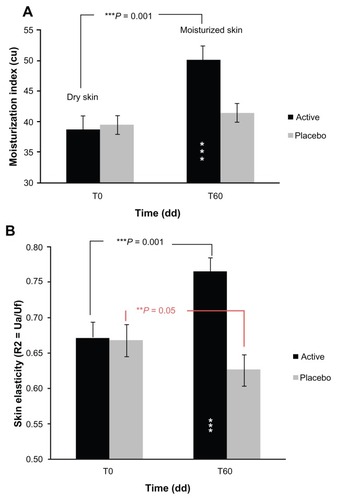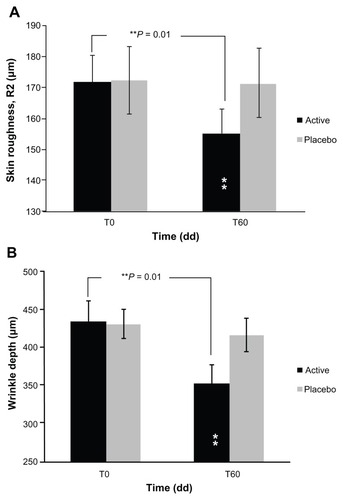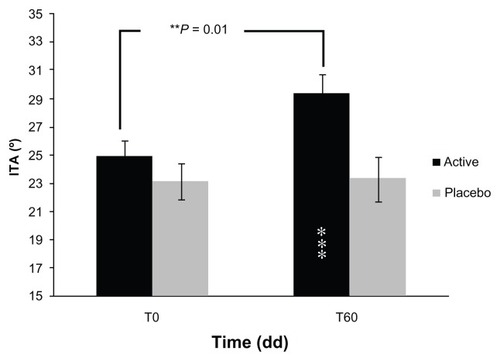Figures & data
Table 1 Inclusion criteria
Figure 1 Antioxidant evaluation. (A) Derivatives of reactive oxygen metabolites test (Carratelli units). (B) Oxyadsorbent test (mmol HClO/L) both as a function of time in days (dd).
Abbreviation: d-ROMs, derivatives of reactive oxygen metabolites test.

Figure 2 Skin Antioxidant capacity: FRAP test- (μmol Fe2+/L) as a function of time in days (dd).
Abbreviation: FRAP test, ferric-reducing ability of plasma test.

Figure 3 Skin antiaging effect. (A) Skin moisturization (corneometric units). (B) Skin elasticity (R2 parameter) – (Ua/Uf ratio) both as a function of time in days (dd).

Figure 4 Skin surface (μm). (A) Skin roughness. (B) Wrinkle depth, both as a function of time in days (dd).

Figure 5 Intensity of brown spot: ITA° - grades (°) as a function of time in days (dd).
